Worthies - Holland, Meredith, Robertson, Stuart, Tempest, Trayes, Ward, Wilson
from The Canadian Album: Men of Canada 1896
Port Hope
by W. F. Trayes
Little more than a century ago the present beautiful town of Port Hope was a squalid Indian village, struggling under the name of Gochingomink.
In 1793 two loyal Americans, Nathaniel Ashford and James Stevens, were driven from their New York State homes, and, seeking, with their families and flocks, a home beneath the Old Flag, halted on the banks of the "Ganeraska," and began to carve out their Canadian homes. A few days later several others, accompanied by a party of engineers, arrived and began to lay out a township, which was appropriately named Hope.
Very soon the Indian names vanished, and the stream and settlement were called the "Creek." Later on this embryo river was labelled "Smith's Creek", in honour of Elias Smith, who built the first flouring mill on its banks, by which name it is still known.
The village, for a time, was known as Toronto, but did not receive a settled name until 1819, when, at the suggestion of Hon. G.S. Boulton, it became known as Port Hope.
If records were at hand, it would be of great interest to note the struggles of the men and women who made the history of the first half century of this beautiful and progressive town. That success has crowned the efforts of many noble and self-denying people is evident, and that the present outlook is gratifying is beyond question.
The once rude collection of huts known as Gochingomink has been superseded by a handsome provincial town, which is now reaching out its hands to grasp the honour and responsibility of cityhood.
Notwithstanding all the periods of evolution through which Port Hope has passed, much of its surrounding primitive beauty remains. Perhaps a larger portion than usual of the natural features of the locality has escaped the improving hand of man. Much of the rugged beauty of the forest scenery is yet intact, and here and there, amid their shady coverings, appear the lovely residences of those who have discovered the beauty of this Ontario town.
Port Hope has excellent connection via the Midland division of the G.T.R., with thePeterboro and Belleville region on the northeast, the Muskoka lakes and the Georgian Bay on the northwest, and Haliburton on the north.
A pleasant drive of ten miles will reach Rice Lake, with its unsurpassed fishing, while daily mail and telegraphic communication with Port Hope greatly adds to the comfort of the tourist.
The town is becoming especially noted as a manufacturing centre, being the headquarters for some of Canada's most flourishing industries, including the Consumers' Cordage Co., Globe File Works, Port Hope Carpet Factory, Canada Oiled Clothing Co., a canning factory, besides its foundries, tanneries, sash and blind factories, its excellent flouring mills, and numerous other minor but important works.
The mercantile lines are fully and ably represented by the many fine blocks of stores which adorn the principal streets, and the prosperity of the merchants who cater to the public in this way will compare favourably with any other town in Canada.
The civic government looks well after the material prosperity of the community, and is ever on the alert to give Port Hope every possible advantage in the race for position among Dominion towns, the most recent enterprise being the building of an extensive and complete waterworks system, a luxury which few Canadian towns enjoy.
The large amount of taxable property shows the wealth of the place, while the rate of taxation is not burdensome, and the people are not handicapped by a heavy public debt.
The educational institutions of Port Hope have made it so well known from one end of the Dominion to the other that at the mention of the town the fame of Trinity College School and the High School presents itself. The former has its new and beautiful buildings on a lofty eastern site overlooking the whole town. This splendid institution has now almost a continental celebrity, and, on account of its able management and the good work done, is the cause of much pride to the town and country.
The several excellent primary schools are also well regulated, well managed, and giving the highest satisfaction to all who are interested in the progress of education.
The moral and spiritual life of the town is well cared for by the various religious bodies so well represented, and many of the places of worship are worthy of admiration by judges of such architecture. There are one Roman Catholic, one Baptist, one Methodist, two Presbyterian, and two Episcopalian churches, all doing their work in their own way, and operating in harmony for the general good.
Having enjoyed for years the reputation of being the prettiest and most healthy town in Canada, it is natural that Port Hope should become popular as a summer resort. During the summer months many visitors are entertained in the town, for whom ample sports and amusements are provided. The beautiful sandy beach affords a charming and safe place for bathing, and the same vicinity presents every facility for boating and fishing, while lawn tennis, cricket, and many other games flourish during the entire season.
cursor over, or tap, the following images
GEORGE CHARLES WARD, Port Hope, Ont., was born April 23rd, 1812, in that place. He is the eldest son of the late Thomas Ward, first registrar for the County of Durham, who came from London, England, in 1792, with
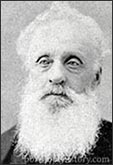 Attorney-General White, and was appointed Registrar of Durham County in 1808.
Attorney-General White, and was appointed Registrar of Durham County in 1808.Mr Ward was educated at the Public Schools of Port Hope and the High Schools of Toronto. He afterwards studied law, and was called to the Bar in 1830. He then practiced in Port Hope until 1839, but owing to ill-health gave up the practice of law, and entered the registry office as Deputy Registrar. In April, 1847, his father resigned his position, and Mr Ward succeeded to the office.
He is a Mason, was Grand Master of the L.O.L., and a member of the I.O.O.F., etc. In politics a Conservative; in religion an Episcopalian. Mr Ward married Harriet, daughter of William Brent, of Quebec, February 1st, 1836. His family consists of two sons and two daughters; one son appears on this page, and is at present (1896) Mayor of Port Hope. The other, Thomas W, is Deputy Registrar.
HENRY HOWARD MEREDITH, deceased, was born in Ardtrea, County Tyrone, Ireland, Jan. 24th, 1815, his father, Rev. Dr. Meredith,
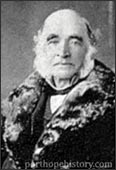 F.T.C.D.,
being rector of that parish.
F.T.C.D.,
being rector of that parish.Dr Meredith died in 1819, and his widow, with her four children, came to Canada in 1825, settling in Quebec Province. In 1839 our subject removed to Port Hope and engaged in a business from which he retired in 1850.
Mr Meredith married, in 1840, Miss Margaret Brown, daughter of the late John Brown, of Port Hope, to whom Port Hope is indebted for her splendid wharves, which were built at his own expense.
Mr Meredith was a Conservative in politics, and although frequently urged to enter Parliament, declined. He was a zealous member of the Church to which he belonged, and took a warm interest in many philanthropic societies. He died in February, 1892, deeply regretted by a large circle of friends, leaving behind him two daughters and one son. Two brothers also survived him, the late Sir William Meredith, Chief Justice of Quebec, and Edmund A Meredith, LL.D., of Toronto.
CHARLES STUART, of "Ballintruan," near Port Hope, Director of the Bank of Toronto, was born April 25th, 1821, at Ballintruan, Banffshire, Scotland. His parents were Donald Stuart and Sarah Michael,
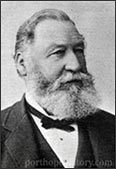 descendents of old and distinguished Scotch families.
descendents of old and distinguished Scotch families.Mr Stuart was educated at the local schools of his native district. In 1840 he left home and joined the service of the Hudson's Bay Company at Fort Temiscamingue, Quebec, May 2nd of that year, as a junior postmaster. Ten years later he was promoted to second-class clerkship. In 1853 he received his first-class clerkship, and in 1860 his commission as chief trader, and shortly afterwards as chief factor. In 1874 he retired with full interest, which continued for three years, when he settled near Port Hope, where he has since resided.
Mr Stuart has never taken an active part in politics, although voting with the Liberal party. He was married in 1862 to Margaret, second daughter of the late Joseph Gladman, chief factor of the Hudson's Bay Company, at Rupert's House, Hudson's Bay. His family consists of one daughter.
PETER ROBERTSON, Port Hope, Ontario, was born May 16th, 1822, in that town. His parents were James and Margaret (Gregg) Robertson, of Scotch birth.
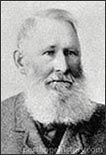
About the year 1818 his father started a tannery and currier business there, which he continued until 1848, when our subject took charge of it. Continuing successfully for eight years he transferred the business to his brother, and gave his attention to a large estate left by his grandfather, to which he has since given his full time.
He was educated at Port Hope schools and Cobourg University. He has also been identified with the Port Hope harbour, having been commissioner. In politics Mr Robertson is a Reformer; in religion a Presbyterian.
He was married in 1851 to Sarah DeWitt, of Nottingham, who died in 1861; he married again, in 1886, a daughter of Louis Bertolotto, of Genoa, Italy. He has one son and three daughters.
JOHN BROOKE TRAYES, deceased, was born in 1842, at Edinburgh, Scotland. He came to Canada in 1853 with his parents, John and Jane Trayes, settling in Montreal. After a primary education he entered
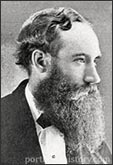 the office of the Montreal Pilot, where he attained a practical knowledge of journalism. He then spent four years in Boston, returning to Canada in 1864 to manage the British
Canadian, afterwards known as the Port Hope Times. For some time this was only a weekly edition, but subsequently became a daily, with a good circulation.
the office of the Montreal Pilot, where he attained a practical knowledge of journalism. He then spent four years in Boston, returning to Canada in 1864 to manage the British
Canadian, afterwards known as the Port Hope Times. For some time this was only a weekly edition, but subsequently became a daily, with a good circulation.Mr Trayes was a prominent member of the Masonic Order, and editor and publisher of its official organ, The Canadian Craftsman. He was also a member of the I.O.F., A.O.U.W., and Royal Arcanum, Assistant Secretary of the Canadian Press Association for many years, and for one term President. In religion he was an Episcopalian; in politics a staunch Conservative, but declined Parliamentary honours. Mr Trayes was married to Marianna, daughter of Augustus Gaudrie, of Port Hope. His family consists of one son and one daughter. [daughter Agnes Ellen Rosa Trayes 1868 Port Hope - 1909 Menominee, Mich married c1884 Port Hope, Jean Eudore Painchaud 1865 Quebec - 1912 Montreal, Que.]
HENRY ALFRED WARD ex-M.P., Mayor of Port Hope, Ont., was born there August 20th, 1849. His father, George C Ward, is Registrar of the County of Durham, East Riding; his grandfather, Thomas Ward, having
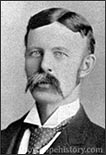 been the first registrar of that county. The latter came to Canada in 1792, with Attorney-General White. Our subject was called to the Bar in 1872, and immediately began
practice in Port Hope, where he has secured a lucrative connection.
been the first registrar of that county. The latter came to Canada in 1792, with Attorney-General White. Our subject was called to the Bar in 1872, and immediately began
practice in Port Hope, where he has secured a lucrative connection.In politics Mr Ward is a Conservative, and was elected to the House of Commons twice, namely, 1885 and 1887. He has also been identified with municipal affairs, having been seven years councillor, and having held the office of Mayor in 1885, 1894, and 1895. He is a public-spirited citizen, and interested in the welfare of the community. He is also well up in military matters, being junior major of the 46th Battalion. He is a member of the Masonic fraternity, C.O.F. and S.O.E. societies, and a member of the Church of England.
Mr Ward was married July 16th, 1895, to Annie B Goodwin, of Savannah, Georgia.
RICHARD HENRY HOLLAND, P.M., was born December 30th, 1836, in the Township of South Monaghan, Ontario. His parents were Richard Lee and Georgina (Hagarty) Holland. The former was a barrister, and practiced
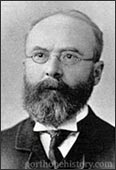 in Oshawa up to the time of his death in 1851.
in Oshawa up to the time of his death in 1851.Mr Holland was educated by private tuition, at the Oshawa Grammar School, and in Bowmanville. At the age of sixteen he took up the study of law in Bowmanville with the late Robert Armour, and afterwards with Richards & Jackson, of Toronto. He was called to the Bar in 1860, and began practice with the late Donald Bethune, Port Hope, with whom he was associated for about eighteen months.
Mr Holland, after practicing in Millbrook for about five years, settled in Port Hope. In 1871 he was appointed Police Magistrate, and abandoned the practice of law. His judgments are considered clear, and are rendered impartially. In politics he is a Conservative; in religion an Episcopalian. He is also a member of the L.O.L. Mr Holland was married, in 1861, to Victoria Sowden.
GEORGE WILSON, J.P., editor of the Port Hope Daily and Weekly Guide, was born April 18th, 1825, in Yorkshire, Eng., coming with his parents to Canada in 1832. He was educated at the schools of Markham,
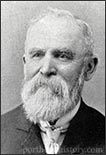 after which he learned the carriage building trade, at which he worked for thirteen years. He then followed mercantile life, in Port Dover, for about ten years, after which he
purchased the newspaper, The New Dominion, in that town, which eventually merged into the Toronto Truth, now edited by Mr Wilson's son. In 1874 he bought the Guide, which to-day has a large
circulation.
after which he learned the carriage building trade, at which he worked for thirteen years. He then followed mercantile life, in Port Dover, for about ten years, after which he
purchased the newspaper, The New Dominion, in that town, which eventually merged into the Toronto Truth, now edited by Mr Wilson's son. In 1874 he bought the Guide, which to-day has a large
circulation.Mr Wilson is a member of the Masonic Order, R.T. of T., and Home Circle, and for ten years was Chairman of the License Commissioners for East Durham.
In religion, a prominent Methodist. He was married March 23rd, 1847, to Sarah, daughter of Captain Henry Howell, of Scarboro, who died December 3rd, 1894. He was married a second time, January 1st, 1896, to Miss M A Murney, daughter of the late John Murney, Picton. His sons are all editors or managers of various newspapers.
WILLIAM SCOTT TEMPEST, deceased, was born at Halifax, May 23rd, 1833. He was the son of John Tempest and Elizabeth Townsend, who were also born at Halifax. He was educated at the public school of his native place,
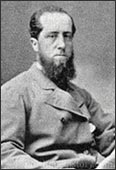 and at an early age apprenticed to the hardware business. In 1856 he went to Montreal, where he was employed in that line until 1869, when he removed to Port Hope, and purchased
a grocery business, which he conducted until the time of his death, which occurred July 10th, 1890.
and at an early age apprenticed to the hardware business. In 1856 he went to Montreal, where he was employed in that line until 1869, when he removed to Port Hope, and purchased
a grocery business, which he conducted until the time of his death, which occurred July 10th, 1890.Mr Tempest was a member of the Town Council of Port Hope in the early days, and was known as a public-spirited and liberal benefactor amongst his townspeople. He had a wide circle of friends, who appreciated him for his many sterling qualities, and who very sincerely regretted his early demise. In politics he was a Conservative; in religion an Episcopalian.
Mr Tempest was married in Montreal, May 26th, 1858, to Mary Ann Gorrie, daughter of Daniel Gorrie, a well-known retired gentleman of that city. He leaves a wife and seven children.
WILLIAM FRANCIS TRAYES, editor and proprietor of the Port Hope Daily and Weekly Times, was born in Port Hope, January 10th, 1872. He is the son of John Brooke Trayes, whose portrait and sketch appear
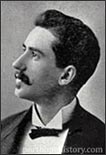 on this page.
on this page.Mr Trayes was educated at the Public and High Schools, Port Hope, and at the age of seventeen entered his father's office to learn printing and journalism, which he has since followed. At the time of his father's death he was but twenty years of age, but showed himself capable of managing a paper. The Times, under his skilful management, has become a very popular paper, and is well known throughout the County of Durham.
In politics Mr Trayes is a Conservative, and does good work through the columns of his paper for his party. He is Secretary of the Port Hope Conservative Association, an active campaign worker, and an eloquent advocate of Conservative principles. Mr Trayes is also a well-known correspondent for the Canadian press, writes for many American and Canadian magazines, and is also proficient in the art of elocution.
Use the form below to comment on this article. A name is required, optional email address will not be revealed.